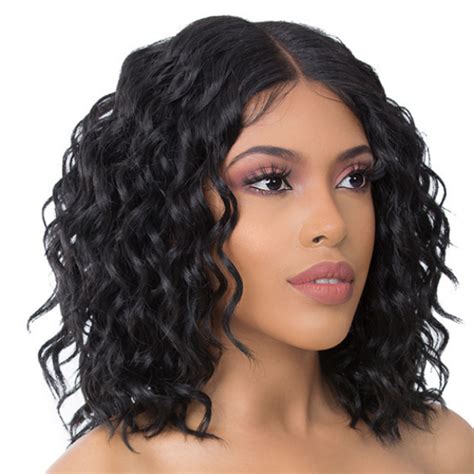The Rise of Wigs: A Billion-Dollar Industry
According to Allied Market Research, the global wig market is projected to reach a staggering $10.2 billion by 2027. This surging demand is primarily driven by factors such as:

- Increased awareness about hair loss solutions
- Growing popularity of wigs for fashion and style
- Advances in wig technology, leading to more natural-looking and comfortable wigs
Types of Wigs
1. Human Hair Wigs
- Made from 100% human hair
- Offer the most natural look and feel
- Can be styled and colored like your own hair
- Relatively expensive, ranging from $500 to several thousand dollars
2. Synthetic Hair Wigs
- Made from synthetic fibers such as nylon or polyester
- More affordable than human hair wigs, typically costing between $50 and $500
- Durable and low-maintenance
- Do not hold curls or heat styling as well as human hair wigs
3. Lace Wigs
- Constructed with a lace base that mimics the scalp
- Allow for a more natural-looking hairline
- Can be glued or taped to the head for a secure fit
- More expensive than other wig types, ranging from $200 to over $1,000
Choosing the Right Wig
1. Determine Your Wig Needs
- Why do you need a wig? (Medical, fashion, etc.)
- What style and length are you interested in?
- What is your budget?
2. Consider Your Hair Type and Skin Tone
- Choose a wig that matches your natural hair color and texture as closely as possible.
- Opt for a wig cap color that complements your skin tone.
3. Get a Professional Consultation
- If possible, consult with a wig specialist who can assess your needs, recommend the right wig, and provide styling tips.
Wig Care and Maintenance
1. Washing
- Wash your wig every 6-8 wears with a gentle shampoo and conditioner.
- Avoid using harsh detergents or over-washing.
2. Styling
- Brush your wig gently with a wide-toothed comb.
- Style your wig using heat tools on a low setting, if necessary.
- Avoid using excessive hairspray or styling products.
3. Storage
- Store your wig on a wig stand or in a breathable container.
- Avoid exposing it to direct sunlight or heat.
Tips and Tricks for Wearing a Wig
1. Secure the Wig
- Use wig glue or tape to secure the wig to your head.
- Avoid applying too much adhesive, as it can damage your skin or scalp.
2. Adjust the Fit
- Tighten or loosen the wig straps as needed for a comfortable and secure fit.
- Consider using a wig liner for added comfort and grip.
3. Blend the Wig with Your Hairline
- Use a concealer or foundation to blend your natural hairline with the wig.
- Avoid wearing the wig with your hair down, as it can create an unnatural look.
Conclusion
Wigs offer a versatile and stylish solution for a variety of needs. By understanding the different types, choosing the right wig for your needs, and following proper care and maintenance practices, you can enjoy the benefits of a natural-looking and comfortable wig for years to come.
Frequently Asked Questions
1. How long do wigs last?
- Human hair wigs can last 1-3 years with proper care, while synthetic hair wigs typically last 6-12 months.
2. Can I sleep in a wig?
- It is not recommended to sleep in a wig, as it can put unnecessary stress on the wig and your scalp.
3. How often should I wash my wig?
- Wash your wig every 6-8 wears or as needed, depending on the level of wear and styling.
4. Can I dye a wig?
- Human hair wigs can be dyed, but synthetic hair wigs cannot. Always consult a wig specialist before attempting to dye your wig.
